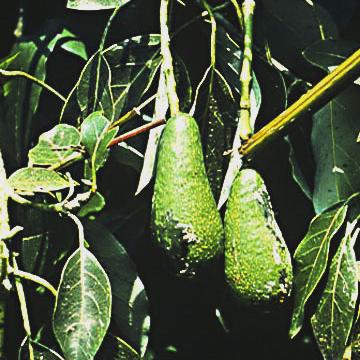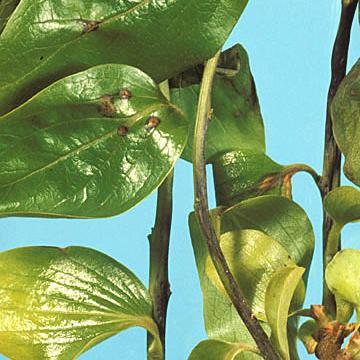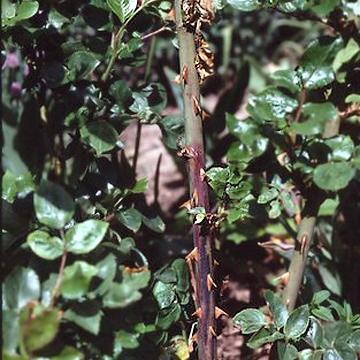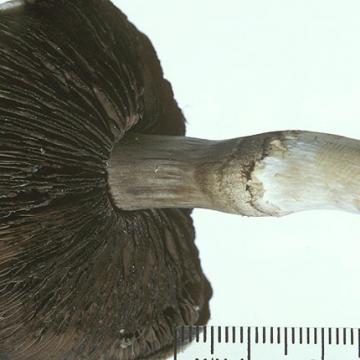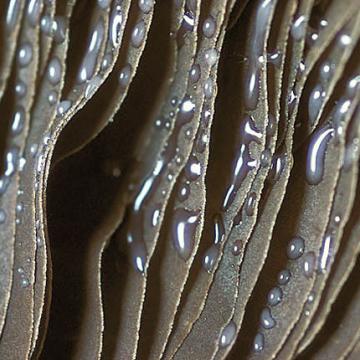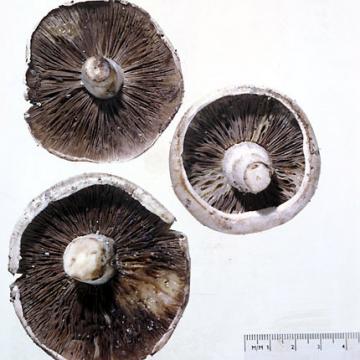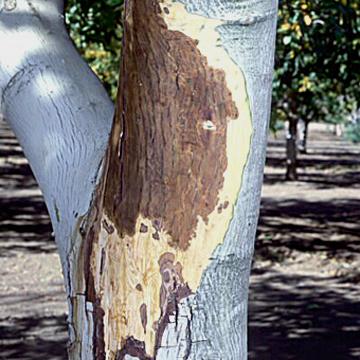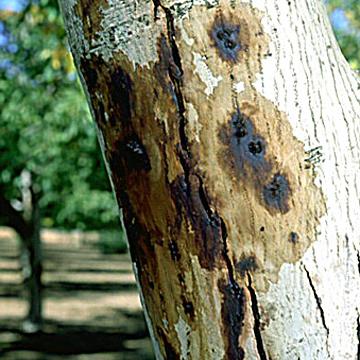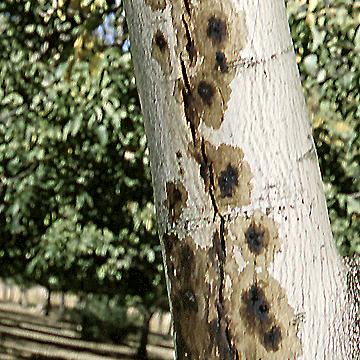DISEASE: Bacterial blast and fruit spot
HOST: Avocado
White bacterial ooze on surface of fruit. Pseudomonas strains that cause canker likely differ from those that infect fruit and leaves.
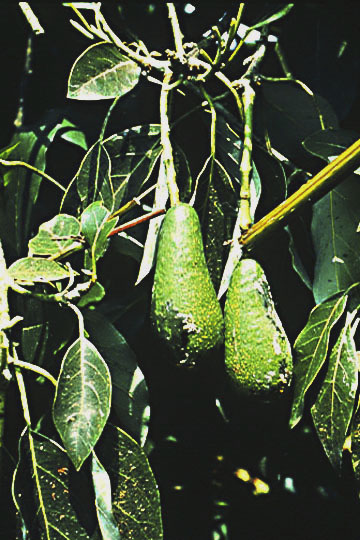
Bacterial blast and fruit spot | Avocado
DISEASE: Bacterial blast and fruit spot
HOST: Avocado (Persea americana)
PATHOGEN: Pseudomonas syringae
SOURCE: L. Fucikovsky
DISEASE: Bacterial blight
HOST: Persimmon
Diseased shoots with spots on leaves and necroses on stems.
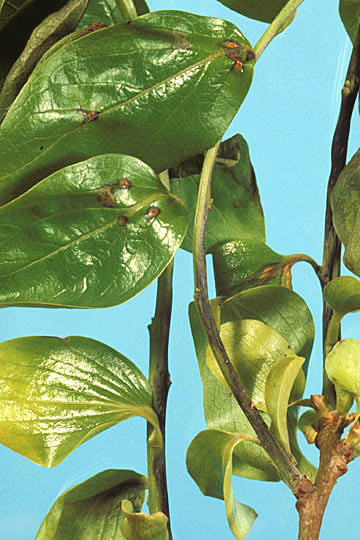
Bacterial blight | Persimmon
DISEASE: Bacterial blight
HOST: Persimmon (Diospyros sp.)
PATHOGEN: Pseudomonas syringae
SOURCE: J. Young
DISEASE: Cane blight
HOST: Rose
Rose with blighted necrotic cane.
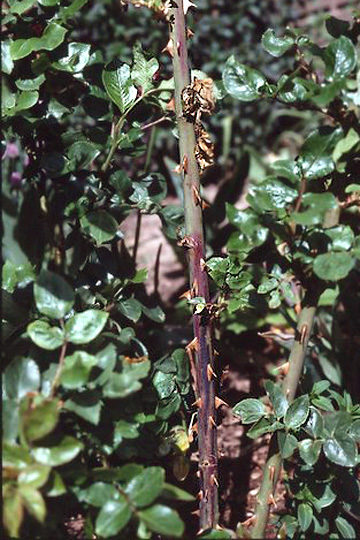
Cane blight | Rose
DISEASE: Cane blight
HOST: Rose (Rosa sp.)
PATHOGEN: Pseudomonas syringae
SOURCE: S. Mohan
DISEASE: Drippy gill
HOST: Mushroom
Drippy gill is characterized by small dark spots on gills with drops of bacterial ooze at the centers. Severe infection results in slimy areas and collapse of gills.
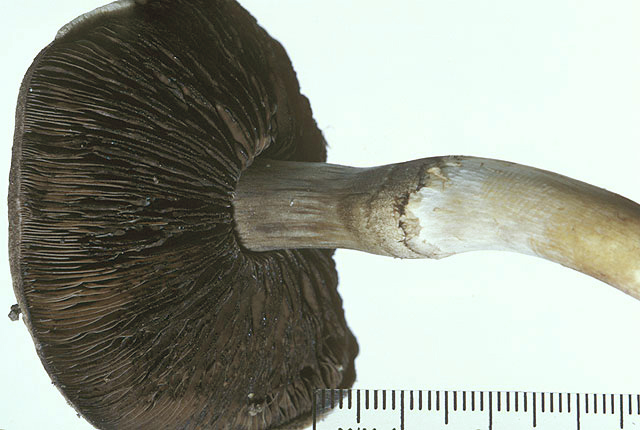
Drippy gill | Mushroom
DISEASE: Drippy gill
HOST: Mushroom (Agaricus campestris)
PATHOGEN: Pseudomonas agarici
SOURCE: J. Young
DISEASE: Drippy gill
HOST: Mushroom
Close-up of infected gills with bacterial ooze.
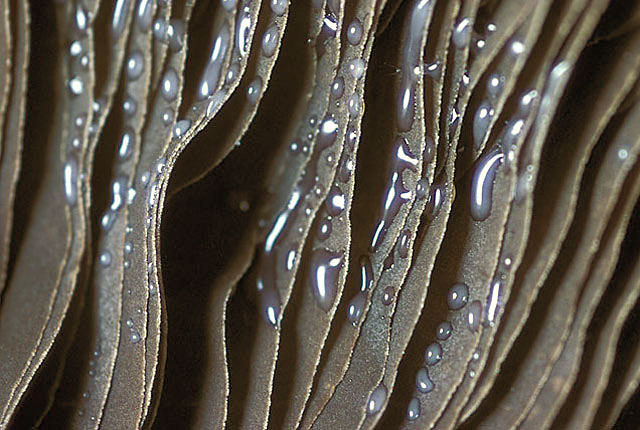
Drippy gill | Mushroom
DISEASE: Drippy gill
HOST: Mushroom (Agaricus campestris)
PATHOGEN: Pseudomonas agarici
SOURCE: J. Young
DISEASE: Drippy gill
HOST: Mushroom
Another view of small, dark spots on gills.
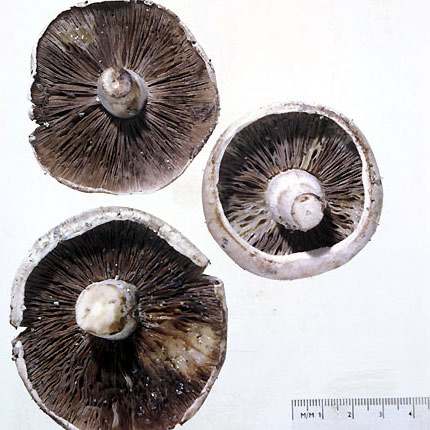
Drippy gill | Mushroom
DISEASE: Drippy gill
HOST: Mushroom (Agaricus campestris)
PATHOGEN: Pseudomonas agarici
SOURCE: J. Young
DISEASE: Shallow bark canker
HOST: Walnut
Diseased, discolored tissues revealed by removing external bark.
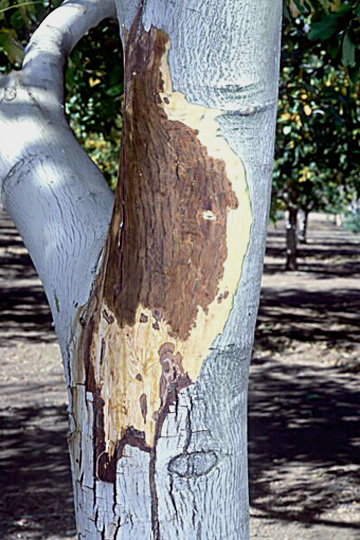
Shallow bark canker | Walnut
DISEASE: Shallow bark canker
HOST: Walnut (Juglans regia 'Hartley')
PATHOGEN: Brenneria nigrifluens
PATHOGEN SYNONYM: Erwinia nigrifluens
SOURCE: B. Teviotdale
DISEASE: Shallow bark canker
HOST: Walnut
Trunk with brown exudate shallow cankers.
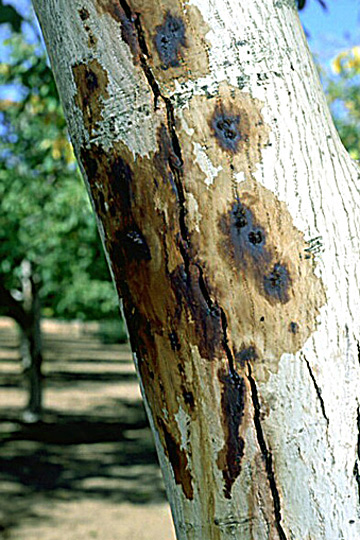
Shallow bark canker | Walnut
DISEASE: Shallow bark canker
HOST: Walnut (Juglans regia 'Hartley')
PATHOGEN: Brenneria nigrifluens
PATHOGEN SYNONYM: Erwinia nigrifluens
SOURCE: B. Teviotdale


